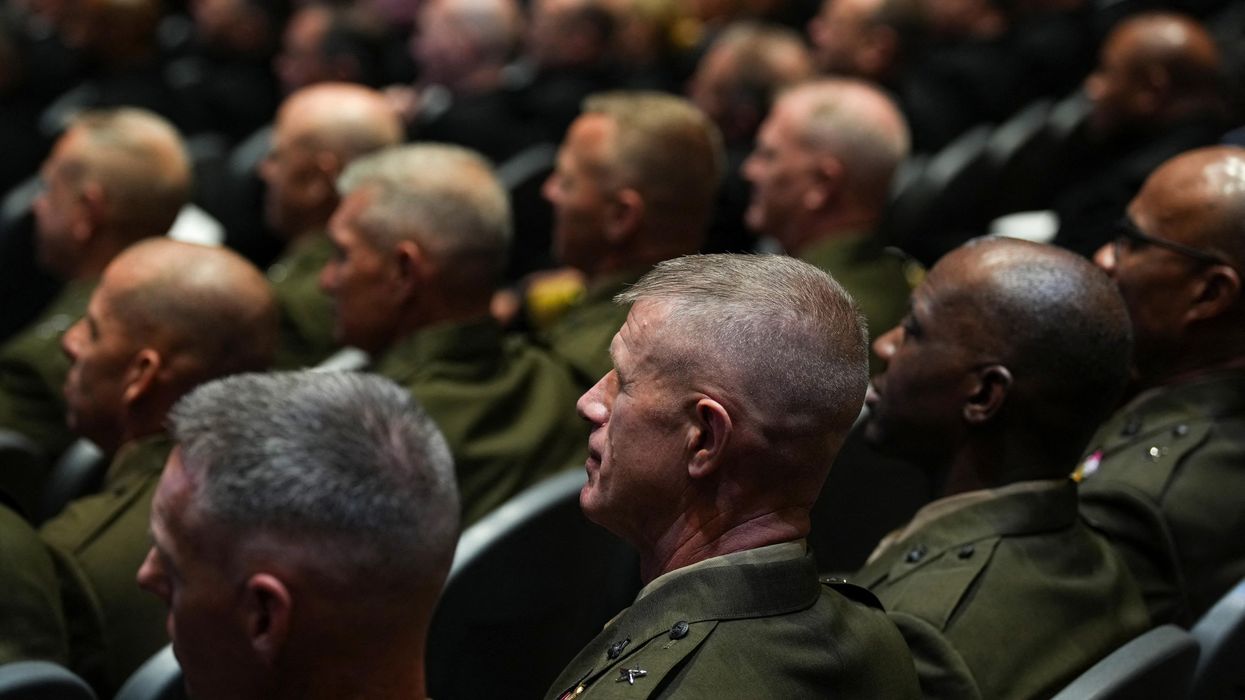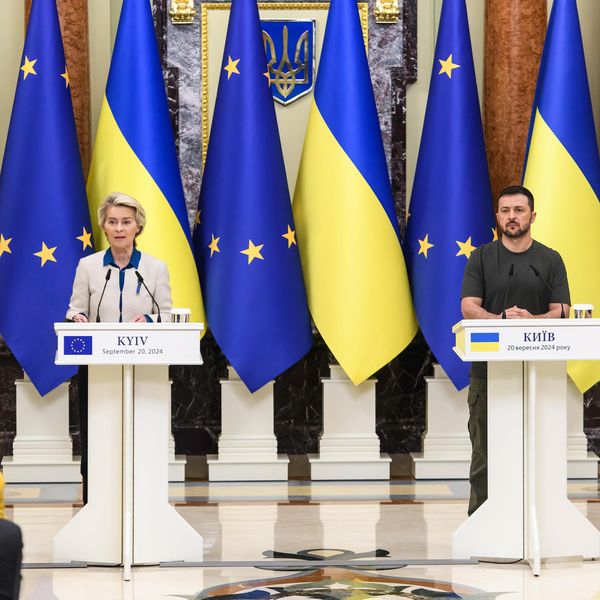It’s that time again — a new Belarusian presidential election, accompanied by an all too familiar cavalcade of denunciations by Western officials and politicians.
Belarus’ strongman President Aleksandr Lukashenko secured his seventh term with an expected 87.6% of the vote, extending his three decades-long rule by another five years. European leaders are all but certain to repair to their time-honored tradition of demanding Lukashenko’s ouster while imposing fresh sanctions on Belarus. Minsk will predictably respond by doubling down on its ties to Russia and China, perpetuating a cycle of hostility between Belarus and its neighbors that continues to destabilize Eastern Europe.
It needn’t be this way. President Trump has a unique opportunity to course-correct relations between Belarus and the West by building on policies pursued during his first term. Doing so would not only advance core U.S. interests but bolster European security and prosperity over the long term.
U.S. policy toward Belarus has swirled for the last three decades in a miasma of neoconservative wishful thinking. Lukashenko, according to this guiding impulse, is an illegitimate usurper who must be made to leave in order for a democratic, pro-Western Belarusian state to emerge in his stead. This dream of removing Lukashenko from power is to be accomplished by a policy of sustained maximum pressure and diplomatic isolation, kicked into high gear following widespread Western refusal to acknowledge the results of the 2020 Belarusian presidential election.
Belarus’ role in providing passage and logistical support to Russian troops in the Ukraine invasion’s early days imbued these punitive measures with a newfound sense of urgency, leading to the development of “mirrored” sanctions packages simultaneously imposed on Moscow and Minsk.
All this sloganeering and bureaucratic posturing has progressively obscured the reality of the situation: there is no viable pathway to regime change in Minsk, at least not at a cost that any European or U.S. leader is prepared to bear. Lukashenko continues to maintain a firm grip over the country’s security apparatus, rendering moot any prospects of a successful Western-backed military mutiny or mass protests that can fatally destabilize his rule.
Then there is Lukashenko’s external failsafe: Russian President Vladimir Putin has repeatedly stated that Moscow will not allow any such regime change scenario to unfold in Belarus. There is every reason to believe that, if Lukashenko’s rule truly comes under exigent threat, Russian forces will move to occupy Belarus, and they wouldn’t be inclined to leave. The possible, indeed, likely outcome would be exactly what the West is seeking to prevent: Russia’s de facto or official annexation of Belarus.
But what of Syria, one may interject. Surely the Assad regime’s sudden collapse last month, and Putin’s refusal to intervene, offers the West a blueprint for dealing with Lukashenko? The analogy falls flat. For one, Syria is nowhere near a critical security interest for Russia. Moscow could afford to cut the Assad regime loose by bolstering its military presence in Libya while diplomatically engaging the Syrian successor government and its major backer, Turkey, to protect its portfolio of strategic interests in the Middle East and beyond.
No such triangulation is possible with Belarus. Moscow sees the emergence of a Belarus that is militarily and geopolitically aligned with the West as an existential threat and is prepared to use military force, like it did in Ukraine, to foreclose this development. Secondly, Lukashenko does not suffer from the same structural weaknesses and vulnerabilities as Assad. Over one-third of Belarus is not carved up between hostile factions militarily supported by powerful external forces, nor are Belarusian security structures so emaciated and brittle that a rebel force can simply move in and seize control of the capital with little to no resistance, as was the case in Syria.
The Western maximum-pressure campaign against Belarus has not produced any positive domestic changes inside the country, nor has it meaningfully weakened Lukashenko’s rule. Its only tangible effect has been to render Belarus increasingly dependent on Russia and China to a degree that Lukashenko himself has always sought to avoid.
As I explained in a QI brief on Belarus, it has been a cornerstone of Lukashenko’s “multivector” foreign policy for the past several decades to pursue closer ties with the U.S. and EU as a counterweight to what would otherwise be his one-sided reliance on Russia and, increasingly, China. Lukashenko’s strong drift toward Russia since 2020 is purely a product of Belarus’ desire to insulate itself from costs inflicted by a Western economic and diplomatic maximum pressure campaign against Minsk.
To the extent that the purpose of the European and Biden administration’s effort to oust Lukashenko is to achieve a Belarus that is friendly to the West, we are kicking in a wide open door. But if, as one suspects, the real goal is to force Belarus’ complete military, economic, and political divestment from Russia, then it is long past time to acknowledge that this objective is not only unachievable but unnecessary and counterproductive.
Insisting on this type of clean break with Russia compromises Belarus’ longstanding policy of maneuvering between East and West rather than fully committing itself to either of these poles, and invites a wide range of Russian retaliatory moves against Minsk that the West is ill-prepared to counter.
To put a finer point on it, Russian military intervention in response to a Western-backed revolution in Belarus would precipitate a new crisis on NATO’s eastern flank at a moment when Russia-West relations are already at an all-time low. Eastern European leaders may find themselves tempted to respond to Moscow’s intervention by blockading or at least threatening to choke off Russia’s Central European exclave of Kaliningrad, pitting Russia and NATO on a direct path to military confrontation.
There is no, and has never been, a reason to accept such risks. President Trump forged ahead during his first term with a bold vision to re-engage Belarus. There is ample reason for doing so. As the Ukraine war has shown, Belarus is a key component in Eastern European stability. It is a geostrategic crossroads between NATO’s eastern flank and Eurasia, making it valuable not just as a military staging ground but as a transit hub between EU states and the post-Soviet sphere.
The new administration is ideally positioned to pivot away from the failed policy of maximum pressure toward a format for soft normalization with Belarus. Minsk has signaled for the past several years that it seeks a rapprochement with the West. Indeed, Lukashenko’s decision to release detained U.S. citizen Anastasia Nufer on the eve of the Belarusian election cannot be interpreted as anything other than a gesture of goodwill toward Washington.
While the full range of diplomatic possibilities can only be ascertained by engaging Lukashenko directly, it is possible to paint in broad brushstrokes what a deal may look like. The current scope of Belarusian-Russian defense cooperation cannot realistically be rolled back, but Minsk should pledge not to expand its military partnership with Russia beyond its current levels. Minsk would be expected to commit itself not to undertake any hybrid actions against its neighbors, such as facilitating migrant inflows into neighboring countries or hosting paramilitary troops that can conduct low–intensity cross–border operations against Belarus’ neighbors.
It should also pledge not only not to deepen its involvement in the Russian war effort but to play a constructive role in the Trump administration’s effort to end the Ukraine war through a negotiated settlement.
Finally, the two sides would agree to establish continuous dialogue on human rights issues in the spirit of the 1975 Helsinki Accords. In return, the U.S. would provide assurances that it is not seeking regime change in Belarus. It would lift sanctions to a degree required to reestablish economic ties, including energy exports, Western investment inside Belarus, tourism opportunities, as well as education and work arrangements for Belarusians in the West. The U.S. should further add that it is open to removing its other Belarus sanctions on a mutually agreed timeline pending a durable end to the Ukraine war.
This framework for normalization is readily feasible because it is both in Western and Belarusian interests, nor does it demand any real strategic concessions from the U.S. To the contrary, it advances the Trump administration’s larger goal of working toward a stable architecture of peace and prosperity in Europe.
The prior approach to Belarus was a relic of tired establishment shibboleths, trapped in its lack of geostrategic imagination and kept alive solely by weight of bureaucratic inertia. President Trump rightly seeks to renegotiate the terms on which America engages with Europe. Our Belarus posture provides a clear window of opportunity to apply this new thinking.
















